Plant Care
5 Clear Signs of Overwatering Plants

There are many reasons why people love to grow and care for live green and flowering plants indoors. Aside from the health benefits the plants provide, they also help reduce stress and relax the mind. In return, caring for the plant is important because these plants also need care and attention.
However, not all plants require the same level of attention. Some plants need more water and moisture while some prefer minimal and infrequent watering. Some plants even love it when they are ignored. In fact, one of the reasons why plants wilt and die is because they are overwatered. Overwatering causes the roots to become clogged, thus they cannot breathe properly.
If you are staying at home because of the pandemic, and you have all the time in the world to care for and water all your plants every now and then, keep in mind that too much water sitting on the soil will rot the root. To prevent the roots from rotting and the plant from dying, consider these 5 clear signs of overwatered plants:
Overwatered Plants, How to Prevent It from Happening
There are ways to prevent your plants from suffering from overwatering. If you have plants at home, by simply reading the plant care instruction, you will know if the plant requires frequent, regular watering or not. Knowing that not all types of plants require too much attention and maximum watering, it will benefit the plant if you know how much care and attention they need, specifically the amount of water and when to water them. This will help prevent overwatering your plant.
Another way to prevent your plant from overwatering is by making sure that the pot you are using has proper drainage holes. Pots with improper drainage holes are not ideal to use. No matter how rich the soil is, if there is no proper drainage system, the plant will die eventually due to overwatering. If you want to keep the plant healthy and growing, choose the right pots with proper drainage holes.
Overwatered Plants: Signs to Watch Out for
There are 5 signs that will clearly tell you that your plants are overwatered.
1. Leaves are turning yellow or brown.
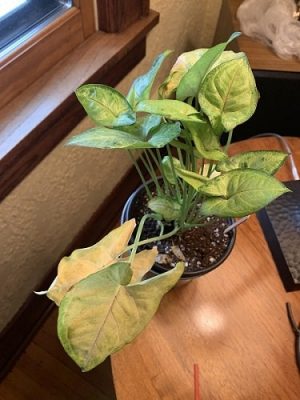
One of the clear signs showing that your plant is overwatered is the change in the color of the leaves. If your healthy plants usually have green leaves, but the leaves are slowly turning into yellow or brown color, it signals you that it is suffering from overwatering. The change in color, specifically from green to yellow or brown, shows that the roots of the plants are starting to rot.
2. The leaves are drooping.
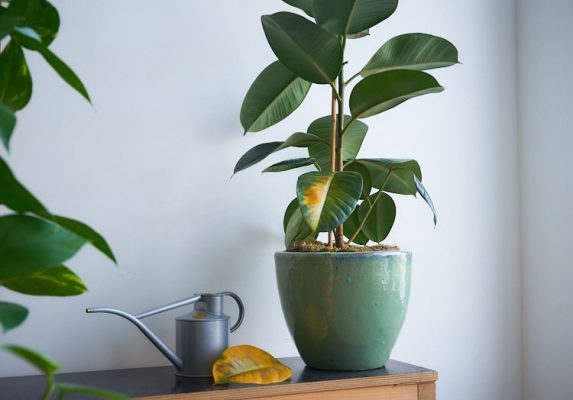 Another clear sign of overwatered plant is the drooping of leaves. Once you see old and new leaves alike are drooping, it is telling you that too much water is sitting still in the soil. Wet soil is the cause of rotten roots, and it makes the plant weak and prone to diseases, thus the leaves droop.
Another clear sign of overwatered plant is the drooping of leaves. Once you see old and new leaves alike are drooping, it is telling you that too much water is sitting still in the soil. Wet soil is the cause of rotten roots, and it makes the plant weak and prone to diseases, thus the leaves droop.
3. The stems become unstable.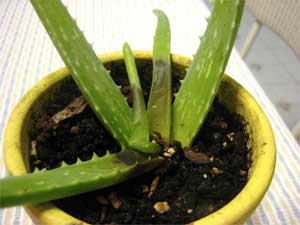
The stems of the plant become soft, mushy, and juicy when the plant is overwatered. If you start to see this sign, your plant is starting to rot from the bottom because of too much water. Also, the soil begins to release an unpleasant odor.
4. Brown spots appear on the leaves.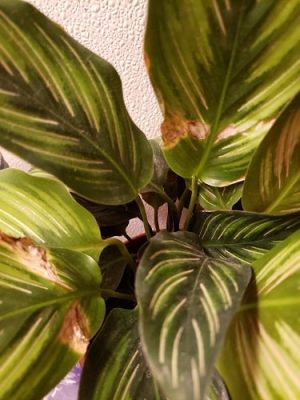
You will know that the plant is suffering from too much water when brown spots appear on the leaves. Brown spots on the leaves show that its roots are rotting because of overwatering.
5. There are presence of fungus and molds on the soil.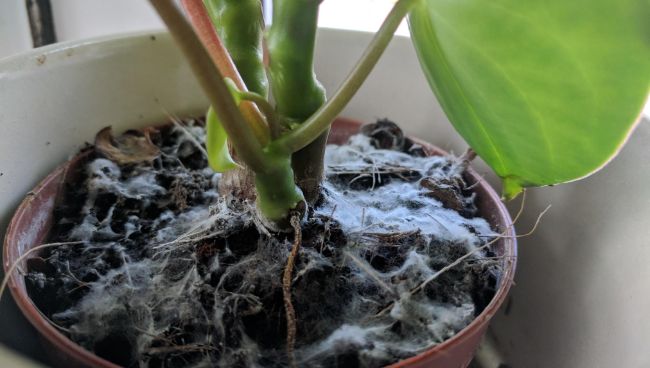
When you see fungus and molds developing on the soil, it is a sign that the plant is overwatered and too much moisture is sitting still on the bottom of the soil.
How to Nurse and Bring Back the Plant to Health
Overwatering may have caused your plant to turn leaves into yellow or brown color because of rotten roots. However, there are ways to bring them back to health. One of the first steps to nurture the overwatered plant is to stop watering it for a while. If the effect of overwatering is minimal, you may stop the watering and let the plant rest for a week or two. Allow the soil to dry completely before giving it hydration again.
However, if the overwatered plant already showed these 5 signs, it means that the roots are rotting. You may need to do aggressive nurturing of the plant to bring it back to health. One best way is to remove the plant from its pot, inspect the roots, remove the rotten roots, and repot the plant. Trimming the plant and the roots is an effective way of removing rotten roots, but you have to use clean and disinfected sharp cutter or knife. Also, make sure that you use new mix of potting soil when you repot the plant. Take note also of the proper drainage holes of the new pots to use.
Proper Way of Watering the Plant
Now that you know how overwatering can damage and kill the plants, it is important that you know how to properly water your plants. Get signs from the soil by simply touching it. If it feels moist, the plant does not need water yet. If the soil feels dry, you may give it the required water and hydration based on the specific plant care instructions.
